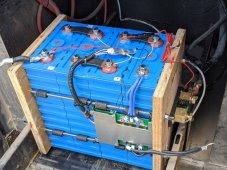BMS settings to use 80% of battery capacity
I have this BMS [JBD-SP045020 - 4S-120A] which is working really well, but I have a question.If I only want the BMS to allow charging up to 90% full capacity, and down to 10%, what settings should I configure?
So to charge up to 540Ah and only down to 60Ah, so extent the life of my cells (purchased new). Or has anyone else got a recommended setup?
Is this possible using the XiaoxiangBMS app?
600Ah LiFePO4 (12x200Ah cells - 3 cells in parallel then connected in series) + Renogy DCC50S [550W PV]



